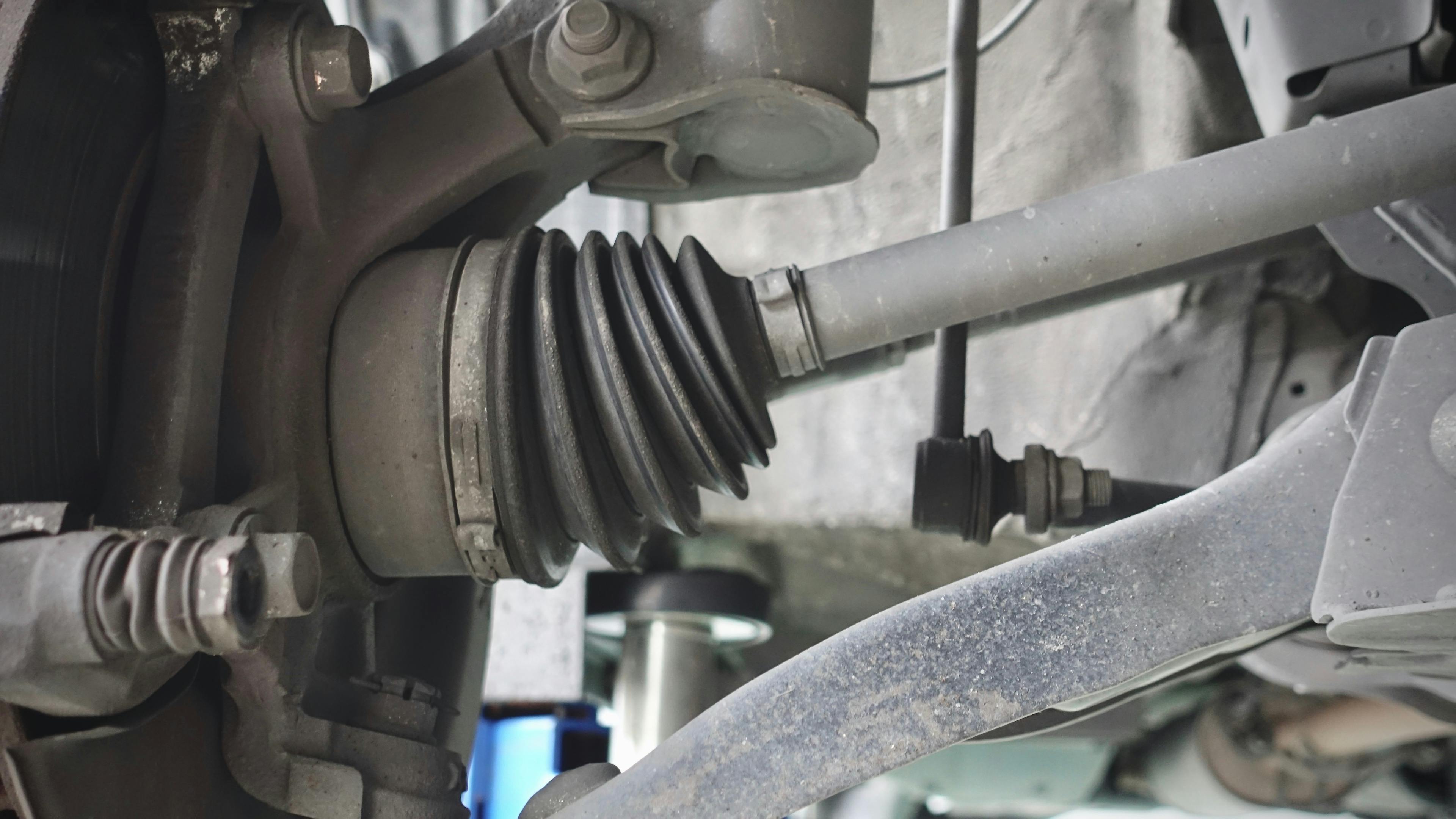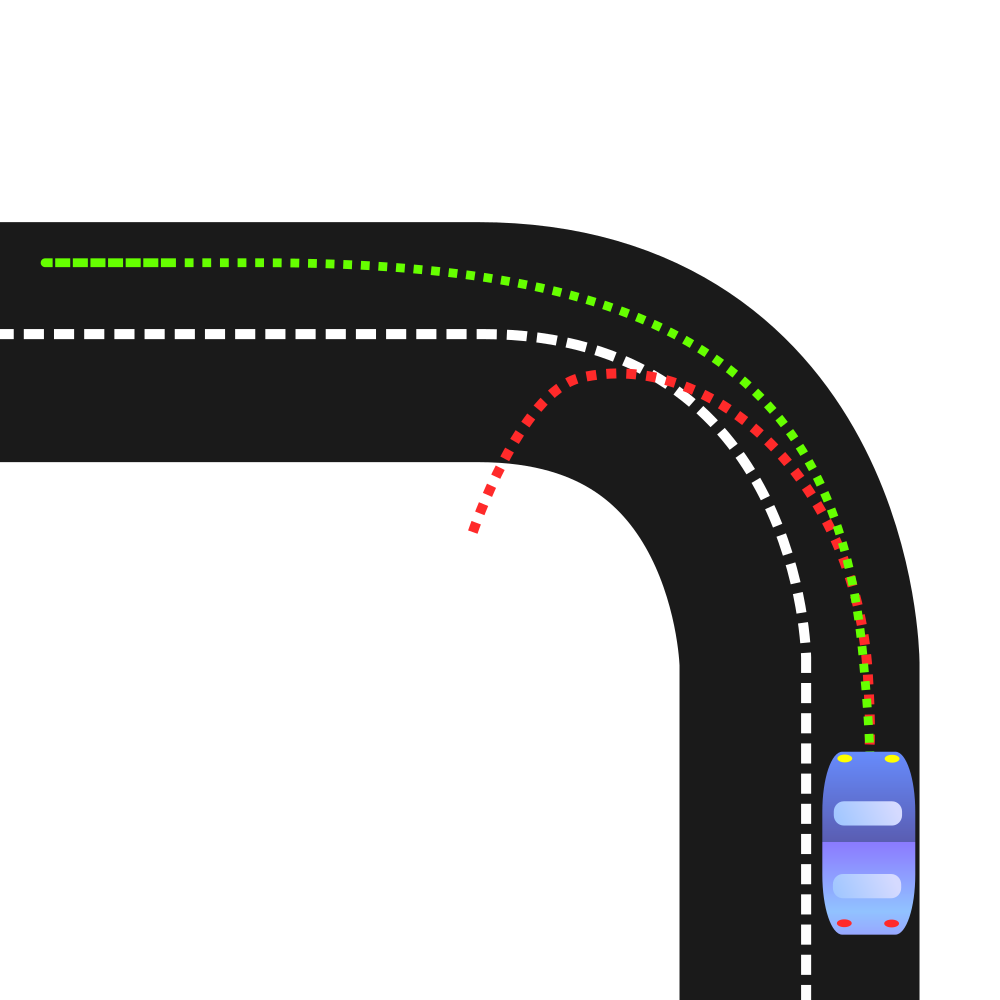Oversteer: How to handle an oversteer skid?

Oversteer is a phenomenon that occurs when driving a car and passing corners with smaller curves at higher speeds or in adverse road conditions.
The name of this phenomenon is derived from the fact that the car, or only its rear axle, turns excessively during oversteer.
Indholdsfortegnelse
Which cars suffer from oversteer?
Oversteer naturally appears in the case of front-engine and rear-wheel drive cars. Though, this is not always the case. Indeed, oversteer can also appear on vehicles with front-wheel drive and front-mounted engines.

Drive Axle: Front, rear, 4x4. How does it affect the car?
However, achieving an oversteer skid on such a car is complicated and especially dangerous because this skid cannot be controlled. This is because the front wheels are driven instead of the rear wheels.
How does the oversteer of the car manifest itself?

During oversteering, the front tires have more grip than the rear ones. This causes the car to spin in the opposite direction or out of control, making an unwanted U-turn. It may happen, especially when driving around a corner at high speed or suddenly changing direction.
Causes of oversteer
The cause of the car's oversteer behavior is the loss of grip of the wheels on the rear axle. However, there can be several reasons why the rear axle loses grip, and they differ significantly from by powertrain layout and, thus, from its drive axle and engine placement.

Powertrain Layout: How does it affect the car?
In the case of a powertrain layout with rear-wheel drive and a rear-mounted engine, oversteer is usually caused by too much acceleration of the rear axle, combined with lateral forces. An engine behind the rear axle acts like a pendulum due to its great weight when driving around a corner.
On the other hand, cars with rear-wheel drive and front-mounted engines have rear axles not loaded at all. The light rear axle thus pushes the heavier front axle and the heavy rest of the car in front of it.

This can cause the wheels of the driven axle to slip during great acceleration or a sudden change of direction, accompanied by the vehicle's heavy weight. The deviation of the rear axle from the course is caused by the inertial forces acting on the car's rear part.
However, oversteer can also occur on a vehicle with front-wheel drive and a front-mounted engine. Such a skid can occur during a maneuver that was supposed to eliminate an understeer skid or, in the case of driving through a corner with the handbrake applied.

Understeer: How to handle an understeer skid?
Though, getting oversteer skid on a vehicle without a driven rear axle is very dangerous because there is no way to control it.
How does an oversteer skid occur?
During an oversteer, the front part of the car willingly turns into a corner, but the rear part continues in the original direction. This causes the car to spin in the opposite direction or out of control, making an unwanted U-turn. The name of this phenomenon is thus derived from the fact that the vehicle turns too much during oversteering.
Unlike an understeer skid, in which the vehicle continues in a straight line, in an oversteer skid, the vehicle begins to rotate around its own axis. With solid rotation and understeer, the vehicle can fly off the road on the outside edge of the curve.
As a rule of thumb, oversteer mostly appears in rear-wheel drive cars, but front-wheel drive vehicles are no exception. In the case of a vehicle with front-wheel drive, it is quite complicated and dangerous to achieve an oversteer skid.
How to handle an oversteer skid?
Mastering an oversteer skid is not as easy as mastering an understeer skid. It requires quite a bit of experience and careful work with the steering wheel and the accelerator pedal.
If the vehicle gets an oversteer skid, it is necessary to sharply turn the steering wheel to the opposite side of the course of the turn. This means that you point the front wheels of your car out of the corner. In this way, it is possible to eliminate the change of the vehicle's axis, which will allow the car to continue on its original trajectory, but only sideways.
Subsequently, depending on the situation, it is possible to correct the slippage of the rear axle by pressing or releasing the accelerator pedal. Adding a throttle can direct the rear of the vehicle when skidding in a large radius corner, but taking off the throttle will help you gain grip when skidding in small radius corners.
However, suppose the reaction to the oversteer slip is disproportionate. In that case, the vehicle may immediately experience another oversteer slip, throwing the rear part of the vehicle to the opposite side after gaining traction and turning too much to the axis of the road. We do not recommend doing any of the above unless you're experienced enough and, as always, at your own risk.
The danger of oversteer skid
The danger of an oversteer skid lies in the complexity of its management. This is because pressing or releasing the accelerator pedal usually does not always solve the situation. Carefully pressing/releasing the accelerator pedal and turning the car's steering wheel at the right moment is necessary to overcome the oversteer skid.
However, suppose a vehicle not driven by the rear axle gets an oversteer skid. In that case, it is practically impossible to manage such a skid because the driver has no means of influencing the adhesion capabilities of the rear axle.
A final myth
There are countless automotive myths among motorists. There is also one widespread myth that fits this topic very well. According to some car enthusiasts, a car with front-wheel drive can only get an understeer skid, and a car with rear-wheel drive can only get an oversteer skid.

Oversteer and understeer: What's the difference?
The above statement is only valid when driving around a corner in case of great acceleration. Under normal conditions, a car with any drivetrain can experience any kind of skid, either understeer or oversteer.